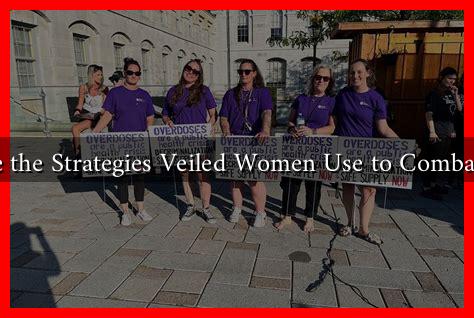-
Table of Contents
What Are the Strategies Veiled Women Use to Combat Stigma?
In many societies, veiled women face significant stigma and discrimination, often based on misconceptions about their beliefs, culture, and personal choices. The hijab, niqab, or burqa can become symbols of oppression in the eyes of some, while for others, they represent empowerment and identity. This article explores the various strategies that veiled women employ to combat stigma, highlighting their resilience and agency in navigating societal challenges.
Understanding the Stigma
Stigma against veiled women often stems from cultural misunderstandings and stereotypes. Common misconceptions include:
- Beliefs that veiled women are oppressed or lack autonomy.
- Assumptions that they are uneducated or less capable.
- Negative associations with extremism or terrorism.
These stereotypes can lead to discrimination in various aspects of life, including employment, education, and social interactions. To counteract these negative perceptions, veiled women have developed several strategies.
Strategies for Combating Stigma
1. Education and Awareness
One of the most effective strategies veiled women use to combat stigma is education. By sharing their stories and experiences, they can challenge misconceptions and promote understanding. Initiatives include:
- Participating in community workshops and discussions.
- Engaging in social media campaigns that highlight positive narratives.
- Collaborating with educational institutions to create inclusive curricula.
For instance, organizations like Muslim Girl provide platforms for Muslim women to share their experiences, fostering a sense of community and understanding.
2. Building Alliances and Support Networks
Veiled women often find strength in solidarity. By forming alliances with other marginalized groups, they can amplify their voices and combat stigma collectively. Strategies include:
- Joining or forming advocacy groups that focus on women’s rights and religious freedom.
- Participating in interfaith dialogues to promote mutual understanding.
- Creating mentorship programs that empower young veiled women.
For example, the Women’s March has been a platform for women of all backgrounds to unite against discrimination, including that faced by veiled women.
3. Personal Empowerment and Visibility
Many veiled women choose to embrace their identity as a form of empowerment. By being visible and proud of their choices, they challenge societal norms. This can involve:
- Wearing their veils confidently in public spaces.
- Engaging in professions that challenge stereotypes, such as politics, sports, and the arts.
- Using social media to showcase their talents and achievements.
For instance, athletes like Ibtihaj Muhammad, the first Muslim woman to compete for the U.S. in the Olympics while wearing a hijab, have become role models, demonstrating that veiled women can excel in various fields.
4. Legal and Policy Advocacy
Veiled women also engage in legal advocacy to combat discrimination. This includes:
- Challenging discriminatory laws and policies in courts.
- Lobbying for legislation that protects religious freedoms.
- Working with human rights organizations to raise awareness about their rights.
In countries like France, where laws against religious symbols in public schools have been contentious, advocacy groups have worked tirelessly to protect the rights of veiled women, emphasizing the importance of freedom of expression.
Conclusion
Veiled women face unique challenges in combating stigma, but their strategies demonstrate resilience and agency. Through education, building alliances, personal empowerment, and legal advocacy, they are not only challenging stereotypes but also redefining their identities in a complex world. As society continues to evolve, it is crucial to listen to and support the voices of veiled women, recognizing their contributions and the richness they bring to diverse communities.
By fostering understanding and challenging misconceptions, we can work towards a more inclusive society where all women, regardless of their attire, are respected and valued.


